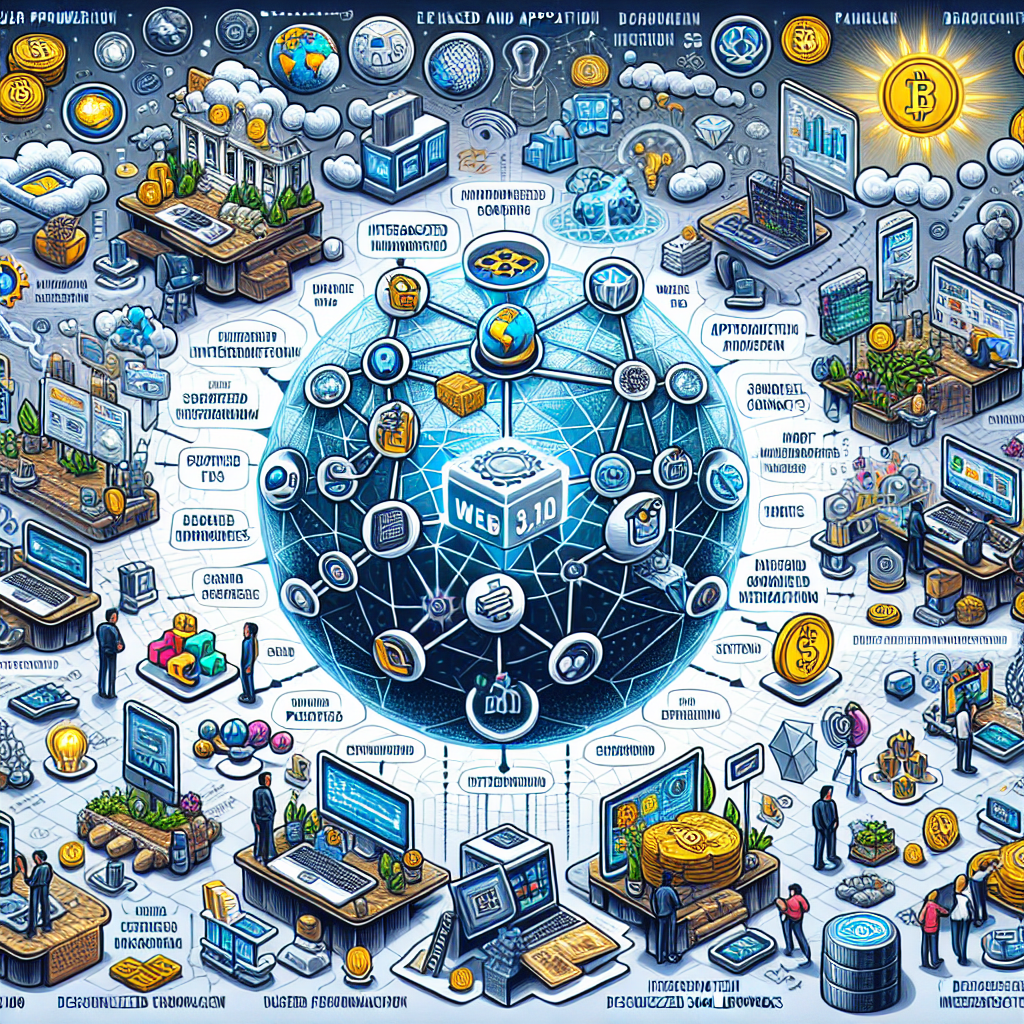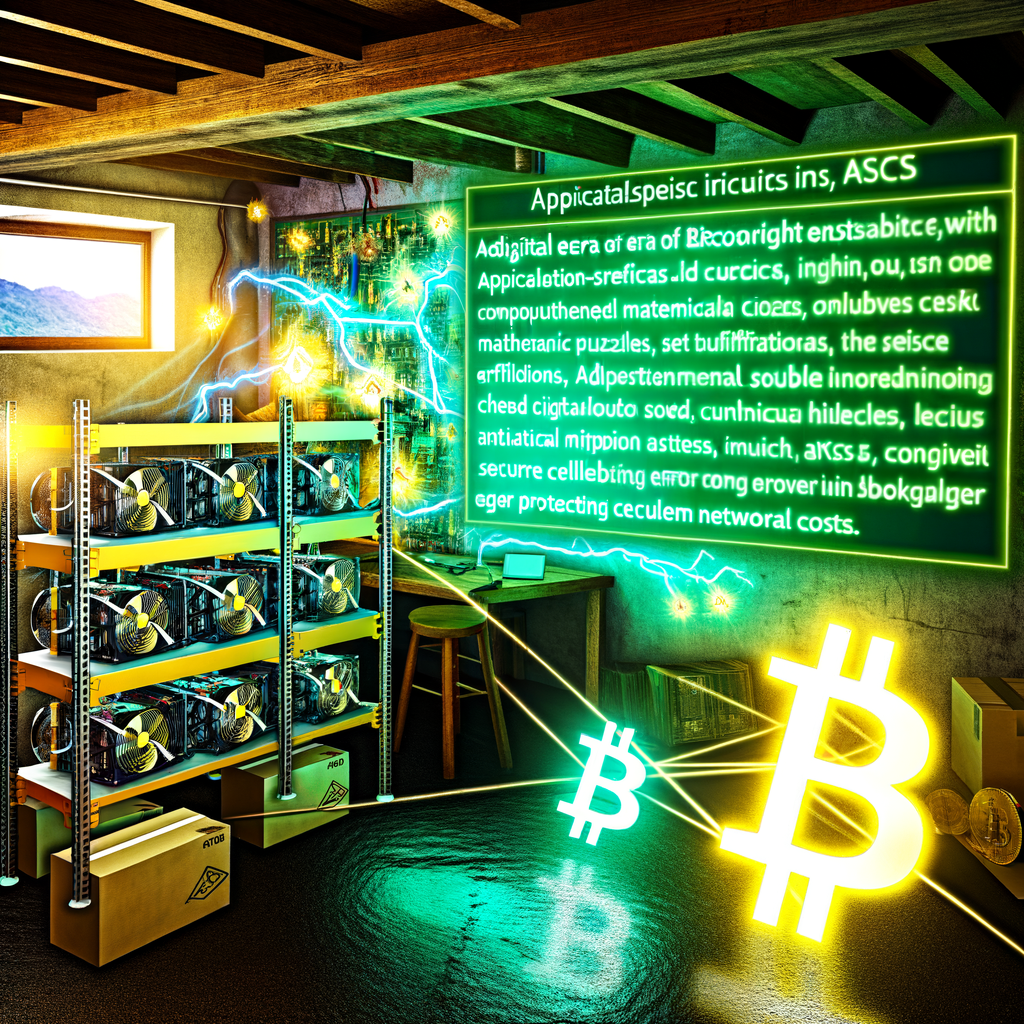The internet has undergone significant transformations since its inception, evolving from static web pages to interactive platforms and now towards a new decentralized paradigm known as Web3. This article delves into the journey from Web 1.0 to Web 3.0, exploring the core technologies that power this new era. We will examine the central role of decentralization, the influence of cryptocurrencies, the rise of non-fungible tokens (NFTs), and the burgeoning field of decentralized finance (DeFi). Additionally, we’ll look into Decentralized Autonomous Organizations (DAOs) and real-world applications that illustrate the practical impact of Web3, closing with predictions and trends shaping the future of the internet.
What is Web3?
Web3 represents the next evolution of the internet, moving away from centralized platforms and towards decentralized networks. Unlike its predecessors, Web3 aims to empower users by giving them control over their own data and digital assets. This new internet paradigm leverages advanced technologies such as blockchain to create a secure and transparent digital ecosystem. By utilizing cryptographic methods and decentralized protocols, Web3 minimizes the need for intermediaries, thereby enhancing privacy and reducing the risk of data breaches. It seeks to create a more equitable digital landscape where peer-to-peer interactions and decentralized applications (dApps) can thrive, ultimately fostering a more open and user-centric internet experience.
The Evolution from Web 1.0 to Web 3.0
The internet has witnessed a remarkable evolution since its early days. Web 1.0, often referred to as the “read-only” web, was characterized by static web pages and limited interactivity. Users could access information, but their ability to contribute content was minimal. As technology advanced, Web 2.0 emerged, bringing a wave of dynamic, user-generated content and interactive platforms. Social media, blogs, and collaborative projects flourished, giving rise to the “read-write” web.
Today, we stand on the cusp of Web 3.0, a transformative era that emphasizes decentralization and user empowerment. Unlike its predecessors, Web 3.0 leverages blockchain technology to create a more secure, transparent, and open internet. This new iteration enables peer-to-peer interactions, reducing the reliance on centralized authorities. Cryptocurrencies, non-fungible tokens (NFTs), and decentralized finance (DeFi) are some of the novel innovations driving this shift.
Web 3.0 aims to redistribute control and ownership, allowing users to have greater say over their data and digital assets. Decentralized Autonomous Organizations (DAOs) exemplify this shift by enabling community-driven decision-making processes. As we continue to explore the potentials of Web 3.0, its real-world applications and the evolving trends will undoubtedly shape the future of the internet.
The Core Technologies Behind Web3
Web3 is built on a foundation of cutting-edge technologies that differentiate it from its predecessors. At its heart lies blockchain, a decentralized ledger technology that ensures transparency and security. Smart contracts, which are self-executing contracts with the terms directly written into code, play a crucial role by automating transactions and reducing the need for intermediaries. Decentralized applications (dApps) leverage these technologies to provide users with trustless and permissionless access to services. Furthermore, peer-to-peer networking enables a more resilient and efficient exchange of data without central points of failure. Together, these technologies empower users, foster innovation, and pave the way for a more equitable digital ecosystem.
Decentralization: The Heart of Web3
Decentralization stands at the core of Web3, fundamentally changing how online interactions and transactions occur. Unlike traditional web models that rely on centralized servers and control, Web3 distributes data and authority across a network of nodes, ensuring enhanced security, transparency, and resilience. This framework minimizes the need for intermediaries, offering users greater control over their digital assets and personal information. As blockchain technology, smart contracts, and peer-to-peer networks converge, decentralization paves the way for innovative applications in various sectors, fostering a more open and equitable digital ecosystem.
Cryptocurrencies and Web3
Cryptocurrencies play a pivotal role in the Web3 landscape, serving as the backbone for decentralized applications and financial systems. Unlike traditional currencies, cryptocurrencies leverage blockchain technology to offer transparency, security, and seamless cross-border transactions. Bitcoin, often cited as the first successful cryptocurrency, paved the way for thousands of alternative digital currencies, each with unique functionalities and use cases.
Web3 uses cryptocurrencies to enable entirely new economic models, encouraging direct peer-to-peer interactions without intermediaries. Smart contracts, predominantly on platforms like Ethereum, automate transactional processes, ensuring conditions are met before executing agreements. This innovation reduces the need for trusted third parties, significantly lowering costs and increasing efficiency.
Moreover, cryptocurrencies underpin the token economy, where digital assets represent value in various forms, from utility tokens used within specific platforms to governance tokens that grant holders voting rights in decentralized autonomous organizations (DAOs). This decentralized financial ecosystem, commonly referred to as DeFi, offers services like lending, borrowing, and trading outside the traditional financial system, democratizing access to financial services.
As Web3 continues to evolve, cryptocurrencies will likely become even more integrated into everyday activities, transforming how we interact with digital ecosystems and redefining value exchange on the internet.
Non-Fungible Tokens (NFTs) and Their Role in Web3
Non-Fungible Tokens (NFTs) have emerged as a revolutionary aspect of Web3, offering unique digital assets that can be owned, traded, and verified on blockchain networks. Unlike cryptocurrencies such as Bitcoin or Ethereum, which are fungible and identical in value, NFTs are distinct and non-interchangeable, providing a new way to represent ownership of digital art, music, virtual real estate, and other creative endeavors. This uniqueness is underpinned by blockchain technology, ensuring authenticity and enabling creators to monetize their work without intermediaries. By leveraging smart contracts, NFTs facilitate transparent and secure transactions, while decentralized platforms empower artists and users alike. As Web3 continues to evolve, the role of NFTs is anticipated to expand, driving innovation across various industries and reshaping how we perceive ownership and value in the digital realm.
Decentralized Finance (DeFi) Explained
Decentralized Finance, or DeFi, represents a paradigm shift in the world of financial services, leveraging blockchain technology to offer open and permissionless financial networks. Unlike traditional financial systems that rely on intermediaries such as banks and brokers, DeFi platforms enable users to engage directly with financial services. This includes lending, borrowing, trading, and earning interest, all through decentralized applications (dApps) and smart contracts. The transparency, security, and accessibility of DeFi are driving significant interest and innovation, creating new opportunities for financial inclusion and disrupting conventional financial models.
Decentralized Autonomous Organizations (DAOs) in Web3
Decentralized Autonomous Organizations (DAOs) represent a pivotal shift in how organizations are structured and operated in the Web3 landscape. Unlike traditional companies that rely on hierarchical management structures and centralized control, DAOs leverage smart contracts and blockchain technology to facilitate decentralized governance and decision-making processes. Members of a DAO typically hold tokens that grant them voting power, allowing them to collectively make decisions on the organization’s projects, operations, and resource allocation. This democratized approach not only increases transparency and reduces the potential for corruption but also aligns the interests of the community with the organization’s goals. DAOs are being increasingly adopted across various sectors, from finance and technology to social initiatives, offering a glimpse into the future of organizational management in a decentralized, digital-first world.
Real-World Applications of Web3
Web3 technologies are not just theoretical; they are actively being applied in numerous sectors, reshaping traditional industries. One notable application is in supply chain management, where blockchain technology ensures transparency and traceability from production to delivery. In the realm of digital art, NFTs are revolutionizing how artists monetize their work, providing a new level of ownership and authenticity. Decentralized finance (DeFi) platforms are democratizing access to financial services, allowing users to lend, borrow, and trade without traditional banking intermediaries. Moreover, Web3 is enabling the development of decentralized social networks, which offer users greater control over their data and content. These examples underscore the transformative potential of Web3, promising to make various systems more efficient, secure, and equitable.
The Future of the Internet: Web3 Predictions and Trends
As Web3 technologies continue to develop, experts predict a more user-centric internet experience where individuals maintain greater control over their data and digital identities. Blockchain technology is anticipated to underpin more aspects of the virtual world, ensuring secure and transparent transactions. Interoperability between various blockchain networks will likely become more seamless, fostering an ecosystem where different decentralized applications can interact efficiently. Innovations in AI and machine learning could further enhance the capabilities of decentralized applications, making them smarter and more adaptive to user needs. Privacy-focused solutions are also expected to gain traction, addressing growing concerns about data security in the digital age. Overall, Web3 promises a more equitable and resilient internet, driven by pioneering technological advancements and a community-focused approach to digital interactions.



Leave a Reply